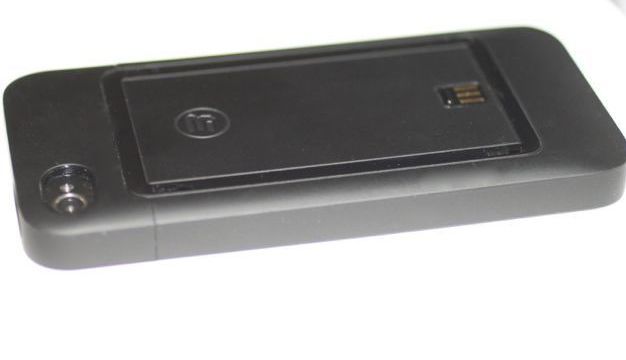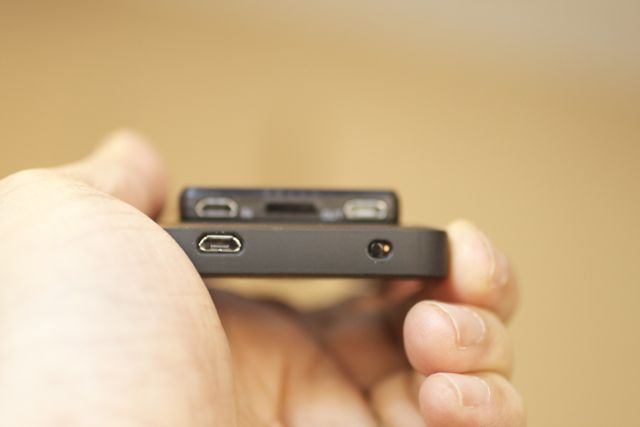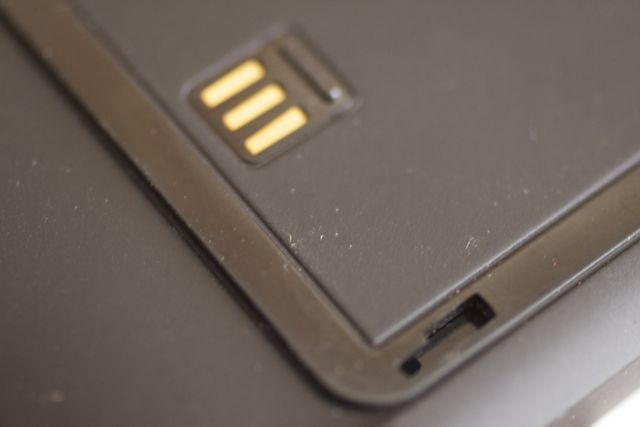
One of the downsides to all of the WiFi connectivity, location-sensing, and general usefulness of Apple's iPhone 4S is how fast it draws down its battery. Unlike almost all of the other touch-screen phones on the market, there's no way to swap in a spare battery so you can extend your Netflix viewing another hour or two when you're stuck in an airport, train station, or boring staff meeting. But a set of products from a Florida company called Third Rail Mobility make it possible to give your iPhone—or any other device that can charge from a USB port—a recharge on the go.
Third Rail provided me with a test unit of the company's Third Rail System for iPhone 4 and 4S, a $90 kit which consists of a slimline case for the phone, an external battery that slides onto the back of the case, and a set of cables that can be used to charge the phone and battery, as well as charge other devices off of the battery. I've been testing the case and battery over the last few weeks to see how well they work for the worst-case scenario of usage: a series of untethered workdays and weekends.
The Third Rail case itself, available on its own for $40, is a two-piece black plastic shell that slightly lengthens the profile of the iPhone. As iPhone cases go, it's not completely unattractive, with its black matte finish; its extra length accommodates the internal docking adapter that allows it to charge the phone from the external battery.

On the bottom of the case, instead of an iPhone docking port, there's a micro-USB port and a small switch for enabling or disabling charging from an external battery. The micro-USB port allows users to charge the phone and tether it to a computer with one of the included cables, but it may create some inconvenience for iPhone users who've already invested in in-car charging systems and other accessories that need the Apple port to connect. In my daily use, that usually meant taking the phone out of the case while driving, and putting it all back together again at my destination.
On the back of the case are a set of three gold contacts (thus the whole "Third Rail" thing). This is where the external battery in the kit connects, clipping into four grooves in the case. The second port on the battery is for charging other devices—a short cable with a female connector for standard USB cables comes with the kit, allowing it to charge anything that would normally connect to a computer or USB-based charger.

The main selling point of Third Rail is its "smart" battery. Available on its own for $60, the battery can be charged along with the phone, or separately through one of its two micro-USB ports. The other port is an "out" port—plug in a short cable with a female USB port, and you can charge anything that has a USB-based charger cable. Multiple batteries can be clipped together to increase the amount of charging capacity that can be delivered to the device being charged.
In testing, I found that a single Third Rail battery was enough to recharge my iPhone 4S battery by 40%, and did so in about 10 minutes. But keeping the battery on the phone was sometimes a challenge; the battery came unclipped from the case when lightly bumped, so keeping the phone in your pocket while charging from the backup isn't a great idea.
On the whole, the Third Rail kit does what it's advertised to do. If you need a way to keep your iPhone up and running for long periods away from a charger, the kit plus an additional battery could extend the useful life of an iPhone 4S for over another full day of reasonably heavy use of location and data intensive applications—at least based on my experience. And the price of the battery on its own is in the same range as options available for Android phones and other devices—including the iPad. You may just want to buy the batteries separately and use another iPhone case.
The good
- Quickly recharges an iPhone 4 or 4S's internal battery by about 40% from one external battery.
- Can charge other USB-powered devices off the battery, and stack batteries for additional charge.
- Case provides relatively good protection for the phone.
The bad
- Replaces Apple docking port with micro-USB, making it awkward to use with other accessories while in case
- Case offers minimal protection from the phone's face.
- A little expensive as case solutions go—the battery alone may be a better deal if you've already got a case.
Listing image by Photograph by Sean Gallagher
reader comments
17